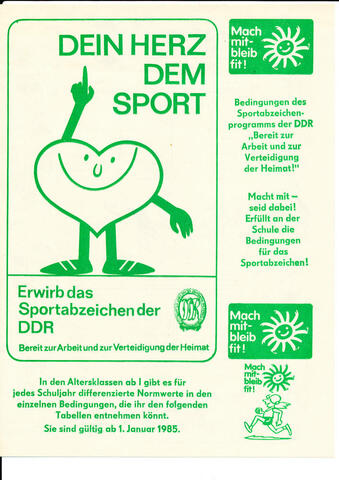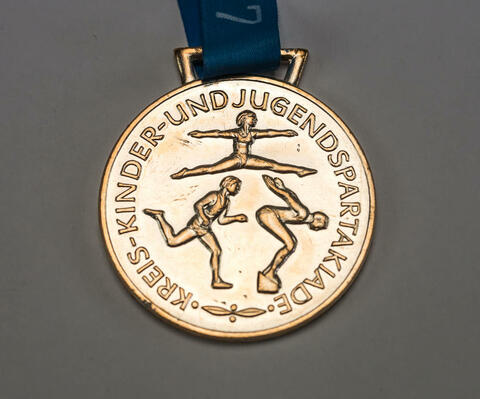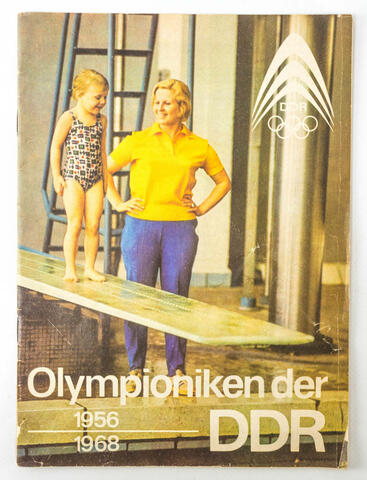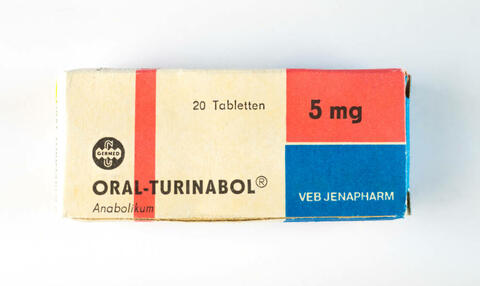GDR History
The path to professional sport in the GDR
The GDR's outstanding sporting achievements remain unforgotten. The small republic was proud to be the country with the most Olympic medals per capita. The special status of sport, especially of competitive sport, was no accidental success. Behind it was a targeted and systematic search for talent and promotion under the watchful eye of the SED regime. The government used the state's international sporting successes to demonstrate the superiority of its own socialist system.
German Gymnastics and Sport Federation
The German Gymnastics and Sport Federation (Deutscher Turn- und Sportbund, DTSB) was a mass organisation responsible for sport, founded on 27/28 April 1957. The Sport Federation was under the control of the Central Committee of the Socialist Unity Party of Germany (SED) and was divided into 15 district organisations, which in turn were organised at district, city and borough level. This structure enabled a nationwide presence as well as the supervision of sport clubs throughout East Germany.
The importance of sport for GDR society manifested itself in the approximately 3.7 million members of the DTSB in 1989. It offered the broad population access to sport at low or no cost and at the same time served as the foundation for the GDR's success in international competitive sport.
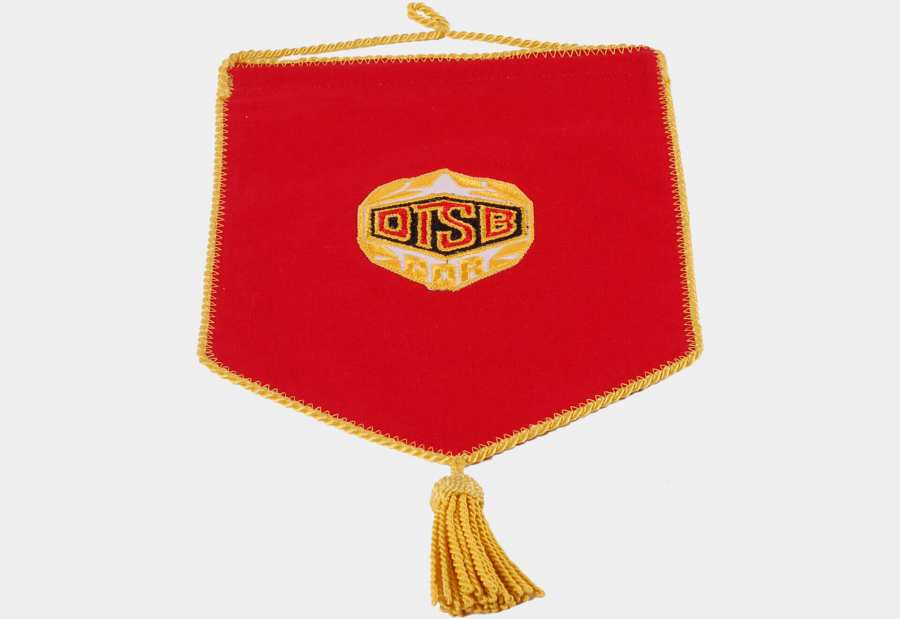
Fig.: Pennant German Gymnastics and Sport Federation (DTSB)
School sport in the GDR and the ESA
Physical education at schools in the GDR usually comprised two to three lessons per week and had a high priority in the curriculum. Physical education was also compulsory for all students at colleges and universities.
In order to discover talents for competitive sport in school sport at an early stage and to systematically promote them, P.E. teachers undertook to carry out Unified Sighting and Selection (ESA). With the aim of identifying talented and athletically gifted children, their athletic performance was determined and documented in grades 1, 3, 6 and 8 on the basis of defined characteristics and attributes. Pupils who proved to be particularly athletic were prepared for admission to children's and youth sport schools and sport clubs (performance centres) in training centres for various sport – if their grades allowed.
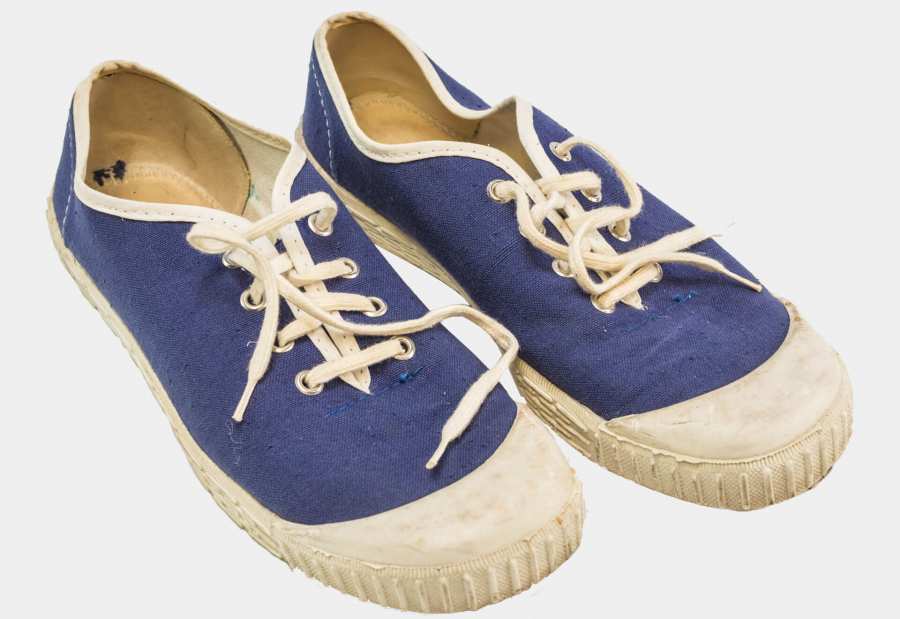
Fig.: One pair of indoor sports shoes
Children's and Youth Sportakiade in the GDR
However, the search for talent was not limited to schools. The concept of the Children's and Youth Parakiades, which had been developed by the SED's sport leadership, comprised a series of sporting competitions and events at different levels. The Children's and Youth Parakiades offered young athletes the opportunity to measure their skills and performance against their peers in various sports. The winners were awarded gold, silver and bronze medals. Those who excelled had the opportunity to be accepted into specialised children's and youth sport schools or sport clubs, where they received intensive sport training and were coached for a possible career in competitive sport.
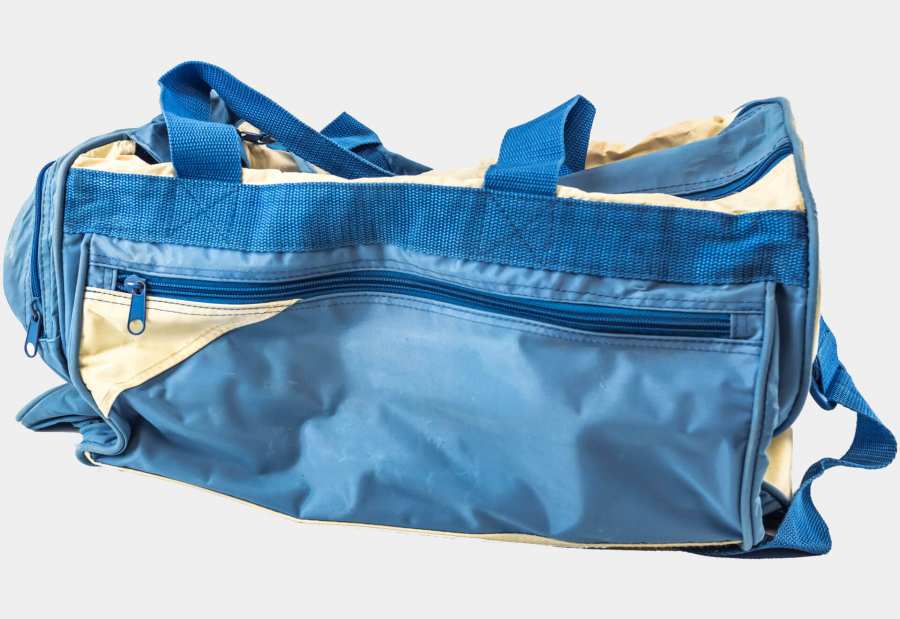
Fig.: Blue, white plastic sports bag with zip and Velcro fastening
Olympics and espionage in the GDR
The major goal pursued through the targeted promotion of young talents in competitive sport was participation in the Olympic Games. The young athletes were intensively trained and prepared for their potential participation in this world-renowned sporting event. The targeted search for talent and the early promotion of promising athletes contributed to the small republic's international competitiveness in various sports and disciplines. Its athletes won numerous medals and set world records, which strengthened the GDR's fame and reputation in international sport.
However, it is known that in some cases the GDR used sport espionage to increase its chances of sporting success. For example, athletes from other countries were observed and information about their training methods and performance levels was collected. These practices were used to improve their own training and preparation for competitions. Another well-known example of sport espionage is that of the GDR slalom canoeists. The GDR coach Werner Lempert outwitted the security personnel of the Federal Republic and thus obtained the dimensions of their artificial ice channel. At the subsequent 1972 Olympic Games in Munich, all four competitions were secured with gold.

Fig.: Tracksuit Olympic Team GDR 1976
Doping in GDR Sport
Just how far the GDR government was prepared to go to prove the superiority of the GDR's socialist system through the sporting achievements of its athletes can be seen in the state's doping cases, which also affected minors.
The young talents who were admitted to the children's and youth sport schools were subjected to a strict training schedule in addition to regular school lessons. Only a few of them managed to represent their country on the international stage of the Olympic Games. But it wasn't only these few stars who were affected by illegal and highly harmful doping. Performance-enhancing substances were often administered to them unknowingly. Those who were aware of this nevertheless had little choice. Those who refused the doping programme had to reckon with disadvantages and even exclusion from the sport. The doping programme was supported by various state institutions such as the Ministry of State Security, the State Committee for Physical Culture and Sport and the Sport Medical Service. Some of those affected still suffer physically and psychologically from the consequences today.
